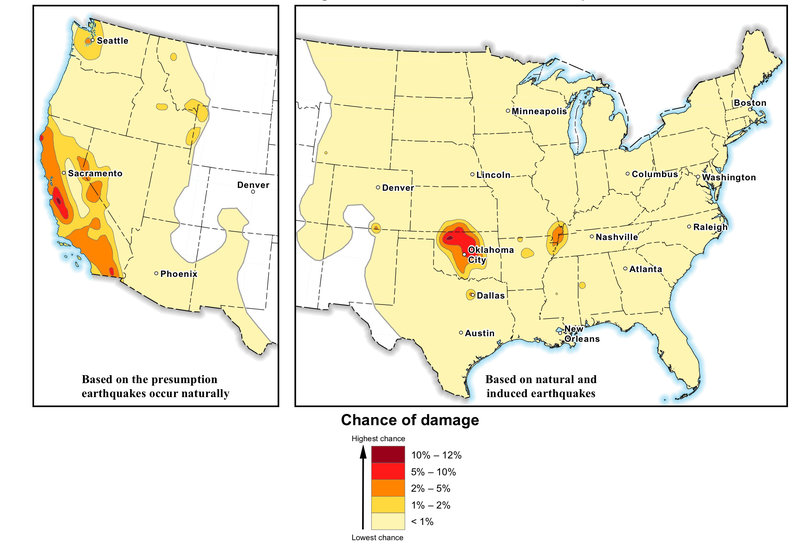Fracking triggers “potentially damaging” earthquakes, even in areas AWAY from injection sites
11/13/2019 / By Edsel Cook

Earthquakes attributed to fracking operations are not limited to the areas around the injection site. A Tufts study has revealed that pumping fluids underground disturb natural networks of fault fractures that reach quite a ways off.
The fracking industry relies on subsurface fluid injection to recover oil and natural gas from deep underground. It also gets rid of wastewater this way.
The Tufts University study put together data from field experiments and ground fault models. It showed that subsurface fluid injection might trigger considerable and extensive seismic activity far from the diffusion zone.
Deep fluid injections have been shown to trigger more earthquakes. However, many believed that seismic activity only increased near the injected areas.
The Tufts researchers showed that fluid injections caused slippages in fault fractures that reached far beyond the diffusion zone. As a result, the technique might trigger potentially destructive earthquakes in distant areas.
Their findings might explain why some areas of the U.S. experienced more human-caused earthquakes than traditional hot spots for natural quakes. (Related: Is fracking just a cover for a corporate water grab? Control the water, control the people.)
Deep fluid injections cause faults to rapidly slip and trigger earthquakes far away
French researchers at the University of Aix-Marseille (AMU) and the University of Nice Sophia-Antipolis (UNS) recently tried out new techniques in modeling the activity of fault fractures. They laid the foundation for later efforts like the Tufts study.

Earlier studies used meter-scale simulations inside a laboratory. Understandably, they were much smaller than the actual faults and behaved differently.
Researchers also observed large-scale natural fault activity at a remote distance. While remote viewing was safer, the data it acquired was also less accurate.
The AMU and UNS team held larger injection experiments in realistic field conditions. They measured parameters such as fault pressurization, fault displacement, and slippage.
The Tufts study took the data from the French experiment and entered it into a fault-slip model. Their results strongly indicated that fault slippage triggered by fluid injections might move much faster than the fluid itself.
“One important constraint in developing reliable numerical models of seismic hazard is the lack of observations of fault behavior in its natural habitat,” explained Tufts researcher Pathikrit Bhattacharya. “These results demonstrate that, when available, such observations can provide remarkable insight into the mechanical behavior of faults and force us to rethink their hazard potential.”
Fracking turned Oklahoma into the most seismically active U.S. state
More and more people have openly expressed concern regarding the dangers of earthquakes caused by fracking-related fluid injections. They especially worry about what has happened to Oklahoma, a state with plenty of fracking operations and their associated man-made earthquakes.
Oklahoma has displaced California as the most seismically active region in the United States. And when one considers that California sits on top of the San Andreas Fault, it losing out to Oklahoma says a lot.
“It’s remarkable that today we have regions of man-made earthquake activity that surpass the level of activity in natural hot spots like southern California,” explained Tufts researcher Robert C. Viesca. “Our results provide validation for the suspected consequences of injecting fluid deep into the subsurface, and an important tool in assessing the migration and risk of induced earthquakes in future oil and gas exploration.”
Fracking usually causes a man-made earthquake that tops out at 3.0 on the Richter scale. These are considered small and “safe” quakes that cause little damage to structures.
However, deep injection activities might reach massive faults found more than a kilometer underground. These fractures endure considerable stress. They are prone to slipping, and they will cause powerful earthquakes.
Read more news about fracking at Fracking.news.
Sources include:
Submit a correction >>
Tagged Under:
Earthquakes, environment, fracking, Fracking Dangers, fractures, man-made disasters, natural disasters, Oklahoma
This article may contain statements that reflect the opinion of the author





















